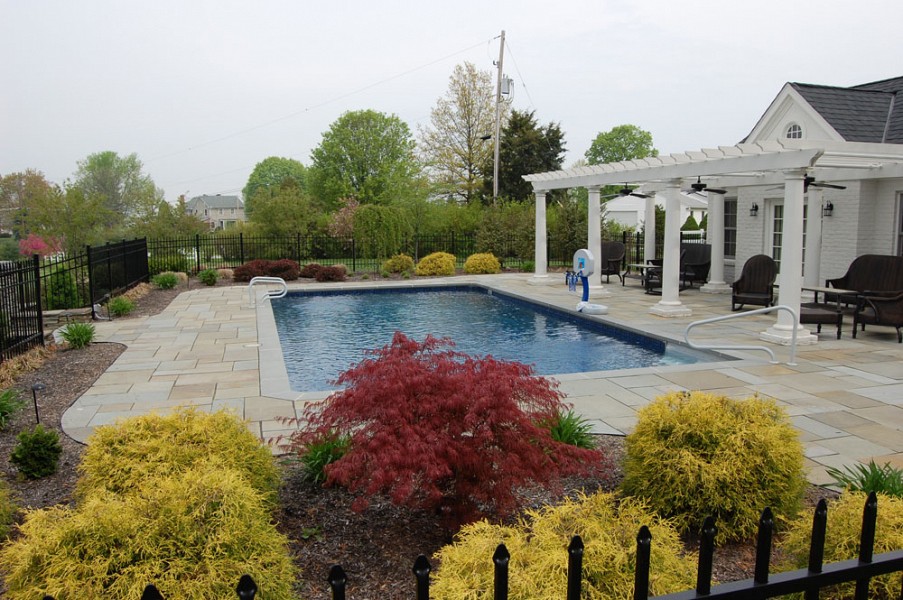
Landscaping Around a Pool
June 18, 2018Pool season is in full swing! If you are a confident do-it-yourselfer who would like to do some refreshing of the area around your pool, we have some tips to help you do it right.
There are a few key things to keep in mind when landscaping around your pool, as it comes with very different requirements than elsewhere in your landscape. The main goals of landscaping around a pool typically include:
- Minimizing debris in the pool
- Providing privacy
- Eliminating thorns, spines, spikes and bees
- No invasive roots
- Planning for low maintenance
Team Spotlight: Pam Grove
May 25, 2018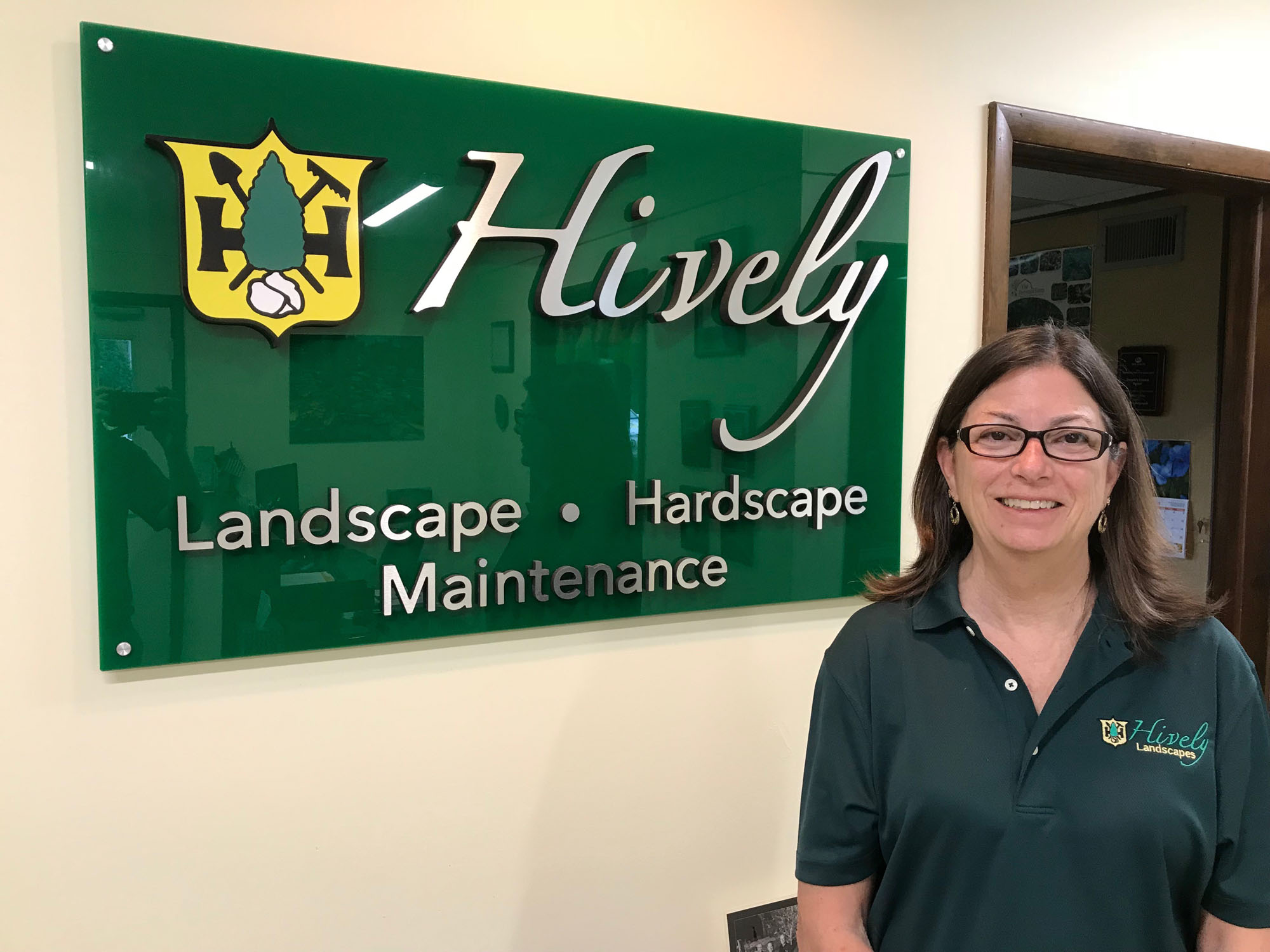 We wanted to help you get to know the team behind the great reputation at Hively Landscapes with our team spotlight series. Pam Grove, Office Manager, was kind enough to join us on the hot seat and answer a few questions. Pam has been running the show at Hively for 18 years, and she is truly the piece of the puzzle that helps keep our clients happy and the business side of our operation running smoothly.
We wanted to help you get to know the team behind the great reputation at Hively Landscapes with our team spotlight series. Pam Grove, Office Manager, was kind enough to join us on the hot seat and answer a few questions. Pam has been running the show at Hively for 18 years, and she is truly the piece of the puzzle that helps keep our clients happy and the business side of our operation running smoothly.
Learn more about what Pam had to say below!
Q: Tell us something that might surprise us about you.
A: When I graduated from high school I tried to join the Air Force so I could become an astronaut; but, I didn’t pass the physical.

Preparing your Landscape for Summer
May 17, 2018Summer will be here before you know it- will your landscape be ready? Hot summer days and dry weather can really stress your lawn and landscape. Without proper preparation for summer, all the money, time and effort you invested in your landscape this spring could be in jeopardy.
To keep your lawn and landscape looking great as the summer heats up, follow these tips from the landscape professionals at Hively.
Advantages & Disadvantages of Drip Irrigation
May 10, 2018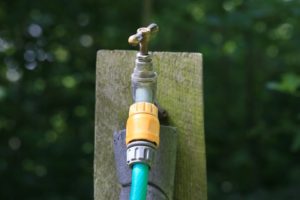 Deep, penetrating watering is the best way to ensure your landscape survives the stresses of the warm season. Proper watering technique calls for watering less frequently, but more at one time, to give your garden a quality soaking that gives roots a sufficient supply of water. This is better than the quick surface watering you see by less experienced gardeners.
Deep, penetrating watering is the best way to ensure your landscape survives the stresses of the warm season. Proper watering technique calls for watering less frequently, but more at one time, to give your garden a quality soaking that gives roots a sufficient supply of water. This is better than the quick surface watering you see by less experienced gardeners.
For commercial landscapes, as well as larger residential landscapes, a drip irrigation system can be an effective alternative to hiring a landscaping crew or doing the task yourself.
Drip irrigation is a more controlled watering method than using a surface sprinkler or a hose. It uses plastic tubes that distribute water along the length of the system through small holes. These holes connect to emitters that are set near your plants and allow for watering at a slow and very thorough rate.
Team Spotlight: Tyler Smith
April 27, 2018 We wanted to help you get to know the team behind the great reputation at Hively Landscapes with our team spotlight series. Tyler Smith, Account Manager, was kind enough to join us on the hot seat and answer a few questions.
We wanted to help you get to know the team behind the great reputation at Hively Landscapes with our team spotlight series. Tyler Smith, Account Manager, was kind enough to join us on the hot seat and answer a few questions.
Learn more about what Tyler had to say below!
Q: Where would you like to travel to?
A: I would love to travel to Australia and go scuba diving in the great barrier reef!
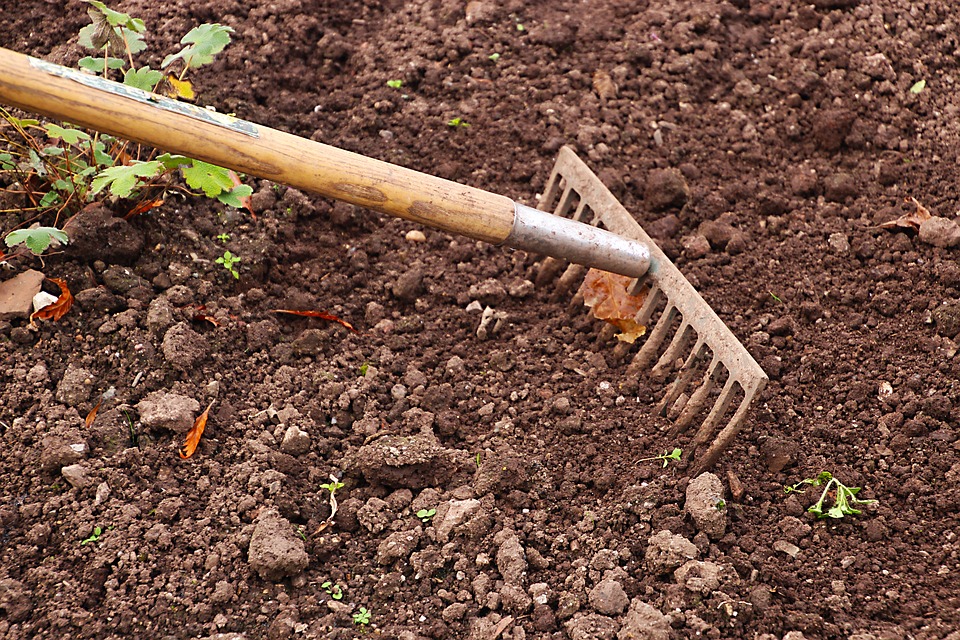
Spring Soil Preparation Tips
April 24, 2018Some of us want to grow the best looking plants each year, ones that will flourish and become the envy of the neighborhood. Others don’t share that dream, but if you’re one of those who does, we have some tips from the landscape professionals here at Hively to help transform your garden into something special. Follow these guidelines and your landscape will be on its way to being the best-looking property for miles around.
First, Test the Soil
The most important thing you can do for your landscape is a simple soil test. A soil test will help ensure landscape success by revealing pH and nutrient levels in your soil. With this information you can correct soil abnormalities, improving the effectiveness of fertilizers, helping the grass grow, and improving long-term resistance to pests and diseases. Spring is a great time to get your soil tested and corrected.
8 Springtime Pests That Will Destroy Your Landscape
April 17, 2018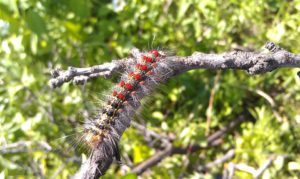 Do you know who else enjoys the warm-up that springtime brings each year? Pests! Putting all that time, effort and money into your landscape helps it look great. Left untreated, though, it also looks great to hungry critters who may be hiding in your landscape. Warm, moist landscapes are the perfect breeding ground for a variety of fungi and diseases.
Do you know who else enjoys the warm-up that springtime brings each year? Pests! Putting all that time, effort and money into your landscape helps it look great. Left untreated, though, it also looks great to hungry critters who may be hiding in your landscape. Warm, moist landscapes are the perfect breeding ground for a variety of fungi and diseases.
Warning signs of a problem include dieback, defoliation, and discoloration. If you begin to notice any of these, immediate action must be taken to avoid eventual damage and possible death.
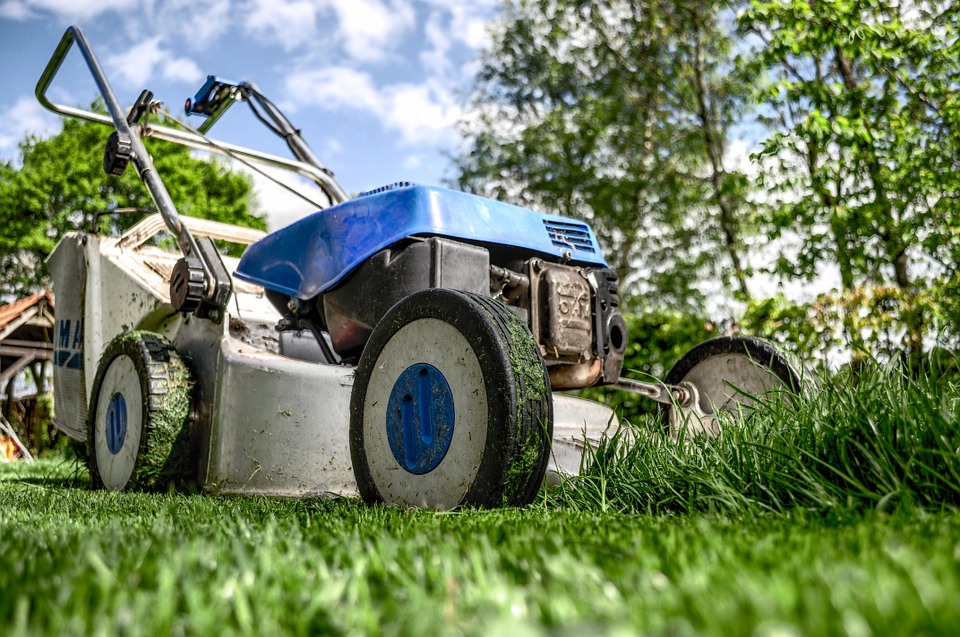
Essential Spring Lawn Mower Maintenance Tips
March 23, 2018Spring has arrived here in PA, and despite the late snowfall it will soon be time to dig out those handy lawn mowers and start your mowing routine.
Before you jump right in and discover your lawn mower isn’t quite as ready to start the season as you are, check out these spring maintenance tasks that can help your mower engine to run strong and keep your lawn properly trimmed.
Here are four simple lawn mower maintenance tips for gasoline-powered mowers.
Team Spotlight: Dave Wildasin
March 20, 2018 We wanted to help you get to know the team behind the great reputation at Hively Landscapes with our team spotlight series. Dave Wildasin, Operations Manager, was kind enough to join us on the hot seat and answer a few questions.
We wanted to help you get to know the team behind the great reputation at Hively Landscapes with our team spotlight series. Dave Wildasin, Operations Manager, was kind enough to join us on the hot seat and answer a few questions.
Learn more about what Dave had to say below!
Q: What would you like to be your greatest accomplishment?
A: Making sure my family all make it to heaven someday.
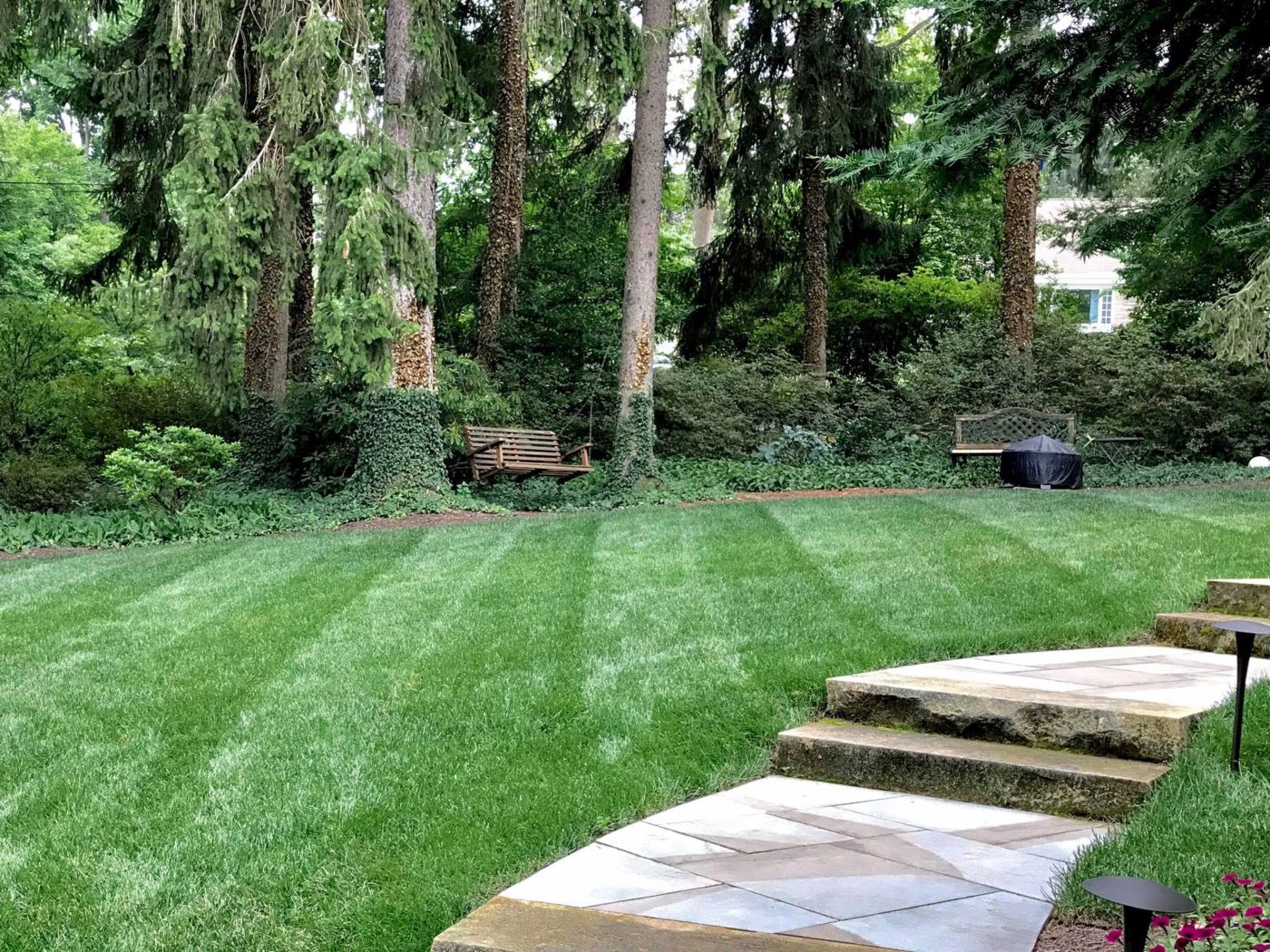
The Fight Against Crabgrass: You CAN Win!
March 8, 2018Every year we receive dozens of calls for help eradicating crabgrass. The problem is that by the time you see crabgrass, you’re already well behind in the battle. You can win the fight, though, with some thoughtful planning and action.
Today we’ll take a look at why crabgrass appears in your lawn, and offer a few suggestions on how you can control it.
Why does crabgrass appear in my lawn?
One of the most common weed problems in lawns here in Pennsylvania, crabgrass releases seeds each summer and then emerges the next spring. Crabgrass seeds are particularly tenacious, as the amount of seed produced is extremely high, and they can stay dormant in the soil for several years before germinating.